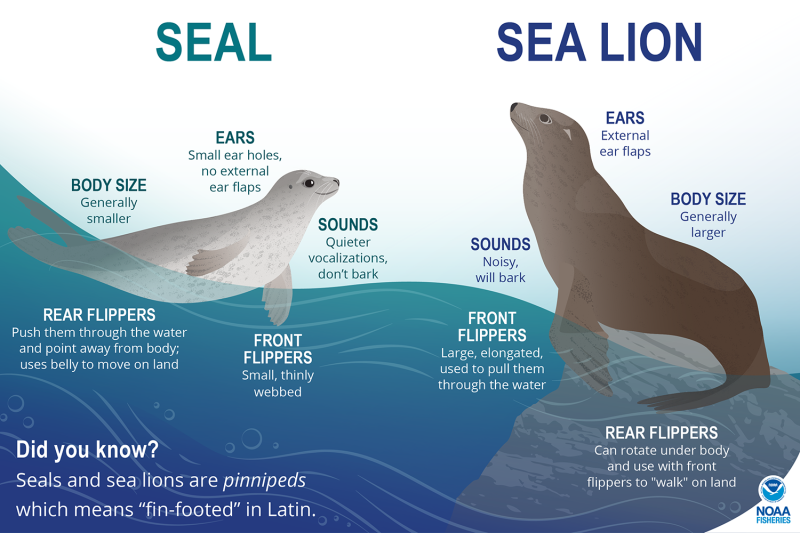Seals and sea lions, along with walruses, belong to a group of marine mammals called “pinnipeds.” Pinniped means fin or flipper-footed in Latin. These animals spend the majority of their time in the ocean but come on shore for long periods of time.
Although seals and sea lions are similar, they are not the same. There are several physical characteristics and adaptations that you can look for to tell the difference between seals and sea lions.
How to Recognize a Seal
“True” seals, also known as “earless” seals or simply “seals,” belong to a group of pinnipeds that have ear holes but lack an external ear flap. This includes species such as the harbor seal, endangered Hawaiian monk seal, and harp seal.
Seals typically have a smaller body size compared to sea lions. But some, such as the Northern elephant seal and hooded seal, can be larger.
On land, seals use their bellies to move around in a caterpillar-like motion. They have small front flippers that are thinly webbed with a claw on each small toe. In the water, seals swim easily, moving their rear flippers back and forth, similar to how a fish uses its caudal fin (tail) to propel itself through the water.
In general, seals are quiet. When they vocalize, it’s with soft grunts, growls, or hisses. Many are less social than sea lion species, especially in the water, but seals can be found on land together to avoid predators, rest, mate, and nurse their pups.
How to Recongize a Sea Lion
Sea lions, such as the California sea lion and Steller sea lion, belong to a group of pinnipeds that have external ear flaps—giving them the nickname “eared seals.” This group also includes fur seals like the threatened Guadalupe fur seal.
On land, sea lions use their large, elongated front flippers and rear flippers rotated underneath their bodies to “walk.” In the water, they propel themselves by paddling their front flippers and use their rear flippers to help steer, like a boat’s rudder.
Sea lions can be noisy and are easily recognizable by their loud and distinct “bark.” They commonly congregate in large groups called “herds” or “rafts.” They can be seen together on offshore rocks, sandy beaches, and sometimes human-made structures such as jetties and piers.
All seals and sea lions are protected under the Marine Mammal Protection Act and some are also listed under the Endangered Species Act. It is important to view these wild animals from a safe and respectful distance for their safety—and yours. If you see a sick or injured seal or sea lion, please call your nearest marine mammal rescue organization.






